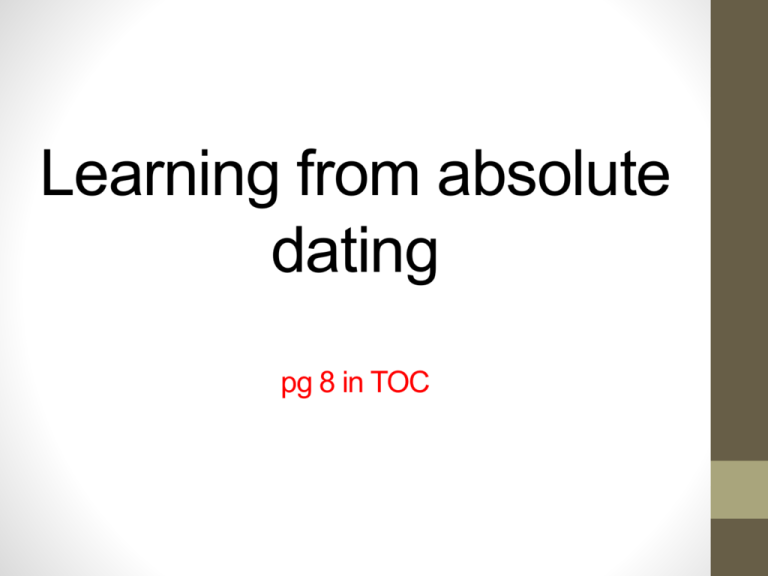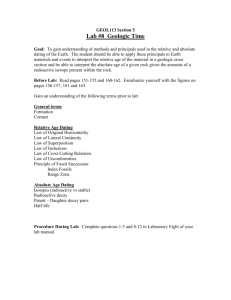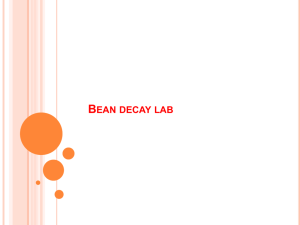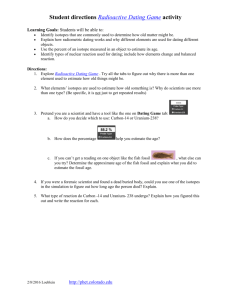Absolute/Radioactive dating
advertisement

Learning from absolute dating pg 8 in TOC Warm-up • In your own words define relative dating. Include an example. • Today we are going to focus on absolute dating. Using context clues, create a definition for absolute dating and also provide an example. Recap: Relative Dating • Used in geology to determine the order of events in relation to other events. • This doesn’t say anything about the exact age of rock layers or fossil remains • Known as the law of superposition • What is radioactive decay? • What does it mean when something is stable or unstable? • What are some ways we use radioactive things? • http://www.youtube.com/watch?v=bLszCCLN-uw So what is Radioactive Decay? • Some atoms are unstable and breakdown over time in another more stable form. This process is called radioactivity • The rate of change or breakdown of elements is measured in Half-lives. • Stable = not decayed • Unstable= decayed • The method used to determine absolute age of rock or fossil A look at half lives: a half-life is the amount of time it takes for something to divide in half Testing out absolute dating • Problem: How many half-lives does it take Rock X to turn into Rock Y Hypothesis: Materials: Beans, container with lid Create a graph like this in your notebook Trials # beans white side up Testing out absolute dating • In this lab you are going to start with 100 beans. The beans represent fossil X atoms. For this lab you will model how radioactive dating works. • Count your atoms and make sure you have 100 • Place them in the box with all them on the white facing side. • Close the lid and shake the box • Open the box and count the atoms that have the red side up. After you finish remove them from the box and graph your white side up results. • Repeat steps 3 and 4 until you get down to 1 or 0. Bean Decay lab Questions 1. Was your hypothesis correct? Explain. 2. In this lab our trials stands for ___________ 3. At the end of each trial , approximately what percentage are the atoms “decaying”? 4. Does the amount of time you shake the box affect the outcome? Explain. 5. Do the number of atoms you start with affect the outcome? Explain. For example if we only used 50 beans, would my data be different. Think about this and explain your answer. Include data and other info to support answer. 6. Relative dating is to law of superposition as absolute dating is to ___________ 7. How do you think absolute dating differs from relative dating? 8. How would absolute dating support the theory that the Earth is old? Explain and use vocabulary terms Look at the class master graph… • Why doesn’t everyone have the same results? • What can this tell us about the accuracy of half lives? Try this • If Carbon-14 has the half-life of 5730 years, after 11,400 years approximately how many half lives would Carbon of gone through? Try This!! •If an element was found with 100 atoms of Carbon, which has a half life of 5730 years; how much will be left after 3 half lives? Ticket out the door 1. How do scientists use radioactive decay or absolute age to date fossils and artifacts? 2. How accurate do you think absolute dating would be? Give me a time frame.








